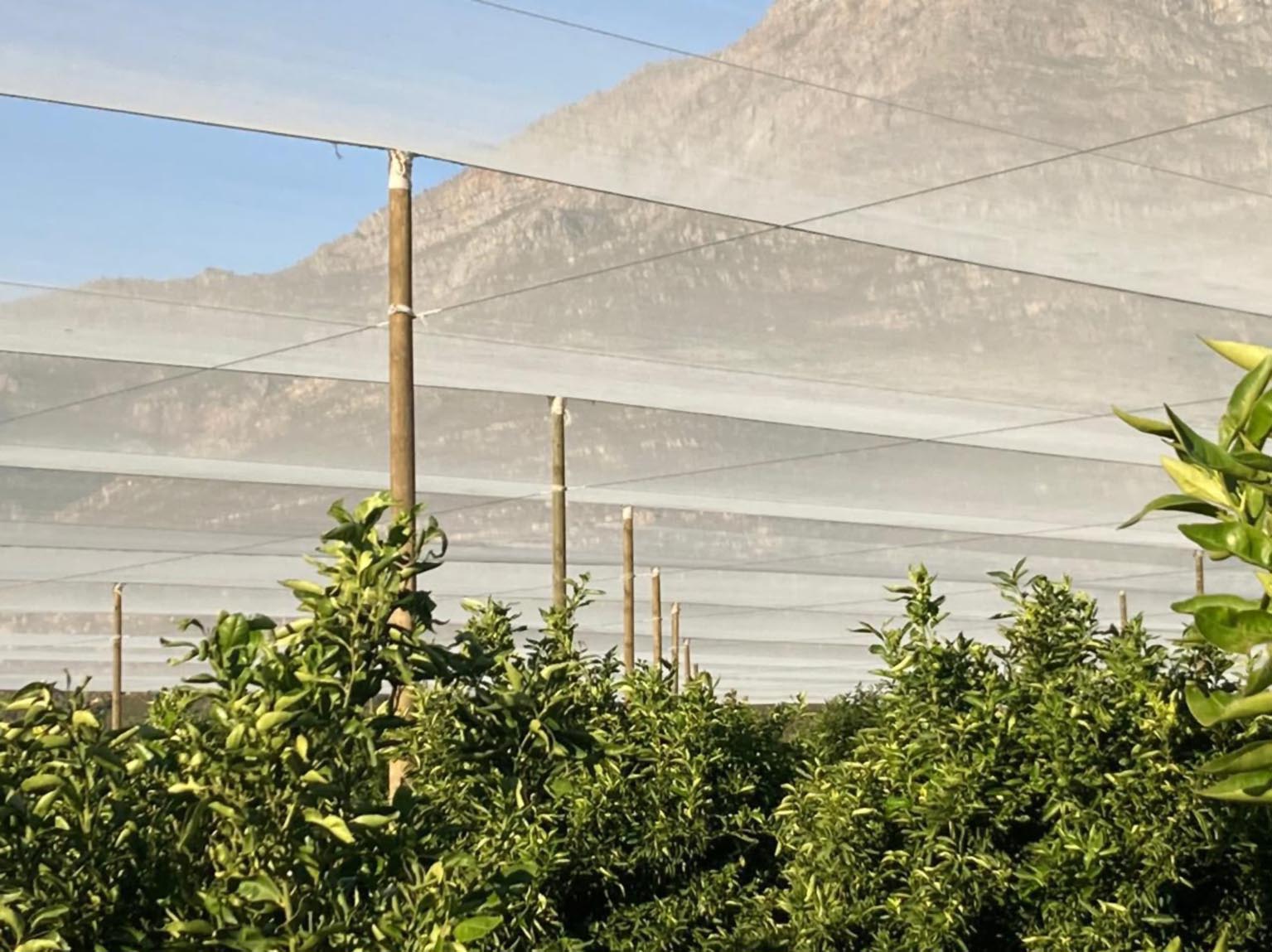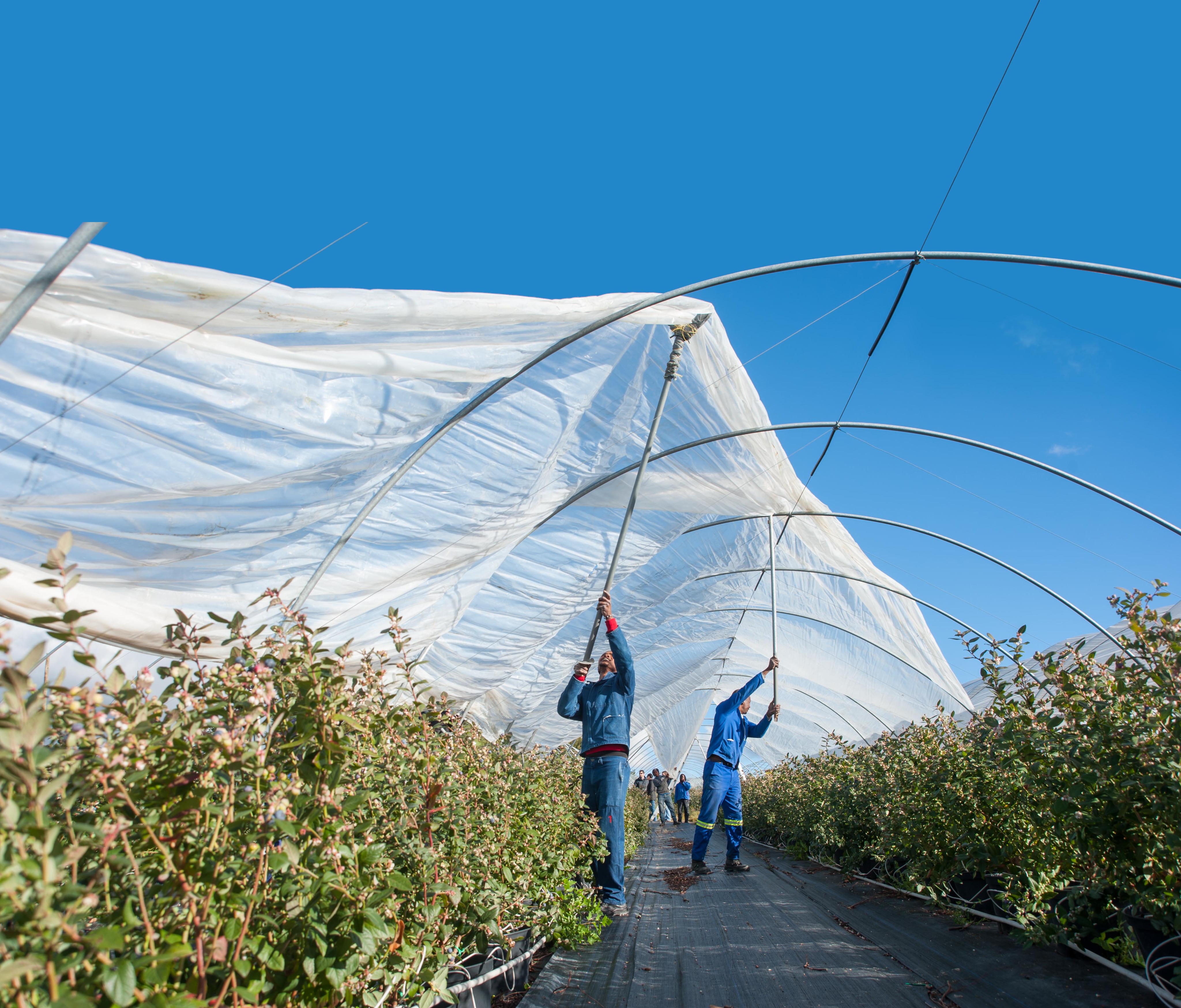Netting best practice will safeguard fruit producers

“The only regrets I have about the netting structures on our farm, is the fact that we did not put it up sooner.”
This is the type of comment fruit producers make when talking about the benefits of putting up netting structures over fruit orchards.
These words are those of Willie Kotze of the Dutoit Group, speaking at a Hortgro webinar about the advantages and challenges posed by the erection of netting structures. (This informative webinar can be viewed on Hortgro’s YouTube channel).
The remark by Kotze echoed the general feeling of more and more producers in the local fruit industry who are increasingly covering their orchards with protective netting. Although academic research into the benefits of netting is still at an early stage, the general impression of studies completed on a variety of fruit cultivars, is that there are more pros than cons.
Collaborative Initiative
Due to the wide interest in netting structures a collaborative initiative was launched to investigate and support the various issues pertaining to netting structures. The Fruit Industry Netting Infrastructure Guidelines and Standards (FINIGAS) was designed to set best practice guidelines to empower producers to make better decisions around their netting infrastructure as well as identify possible risk factors currently faced by producers and industry stakeholders.
These guidelines are currently being determined and compiled into a comprehensive document with the support of Kaap Agri, Hortgro, Citrus Research International (CRI) and various fruit producers who have had first-hand experience in the industry. The guidelines will be revised and updated as necessary to keep abreast of developments and progress in agricultural netting structures.
Competitiveness
The installation of netting structures requires long-term strategic planning while also incorporating the most recent research findings when considering the benefits and dangers of using these structures. Netting can provide technological options which will increase fruit orchards’ competitiveness and longevity. Netting can help to increase the size of orchards in different areas as they can be used to create an ideal or enhanced environment for the production of a variety of fruits, or to improve conditions otherwise not suited for specific cultivars.
According to Dr Koos Bouwer of MBB Consulting Engineers, who is involved in the compilation of the best practice guidelines, scoping of the netting structure industry was commissioned by Kaap Agri and completed in four fruit producing areas. Bouwer said there were multiple objectives in conducting the research, including determining the risks faced by the producer in case of the structure’s failure.
“Netting structures can support producers and value chain stakeholders to obtain increased yields, improved pack-out measures in cartons per hectare, a faster time to maturity, reduced production costs and better risk management. At this stage, research into the benefits of such structures seems to indicate that it will also safeguard producers against unexpected financial setbacks, should non-standardised systems be implemented.”
Specialised Function
Bouwer agreed that implementing a netting solution on-farm requires significant capital expenditure. The producer is required to purchase a variety of goods that make up the netting solution, including the shade netting, stay wire, poles, grips, and anchors. Apart from the materials required, it is common practice for the producer to engage a contractor (whether an independent one or an internally developed team) to erect the netting structure, as this is a specialised function.
“However, it is important to decide beforehand on the reason for putting up a netting structure. Reasons may vary from region to region and across different fruit producers and types of fruit cultivated. Protecting the crops against hail or wind can be one reason, while in another region or on another farm, snow, insects or diseases and accelerated growth could be the motivating factor. The fact is that netting is a precision installation, especially custom-designed for a specific producer and installed by an expert in the field.”
Bouwer said that contractors offer a multitude of internally developed designs and “best practice” erection methods which have yet to be verified, certified and approved. The lack of certification, or at the very least, industry approved best practice, has resulted in increased risk across the industry value chain. Potential losses are not limited to the netting structure itself but may include consequential disasters like crop loss or orchard damage.
Diagnostic Overview
Jaimé Manuel, Business Development Manager at Kaap Agri, said that Kaap Agri’s involvement is essential to enable them as a supplier to the fruit industry to understand the nature of this fast-growing part of the agricultural industry, and especially the fruit sector.
“Adding netting structures to a farming practice is an expensive operation and we need to know what is happening in the netting space. We commissioned Hortgro, the CRI and MBB Consulting Engineers to compile a diagnostic overview of the existing netting industry for us to understand the needs of the industry,” he said.
“The many failures of putting up net structures pose a risk, not only to us as material suppliers, but also to the producers who stand to lose a great deal of money if standardised materials and processes are not available. This will affect the ability to produce optimally. We decided to support the drafting of the best practice guidelines and will support the establishment of an independent body to manage these guidelines and to set standards for the structures," he explained.
Wiehann Steyn, General Manager of Hortgro Science, emphasised the fact that the best practice guidelines have not yet been finalised and that a follow-up project is needed to investigate the poles within the netting structures in particular.“We financed the research into best practices for the netting sector. As industry body to the fruit farmers, we need to look after their best interests and ensure that netting structures are installed properly with the best possible end results. We need to assist producers to minimise their risks and protect them against low-grade equipment and service,” he said.



